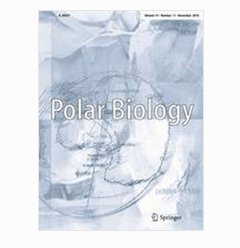Spatial, seasonal and inter-annual variation in abundance and carbon turnover of small copepods in Young Sound, Northeast Greenland
New publication by Ane Bruun Middelbo, Eva Friis Møller, Kristine Engel Arendt, Jakob Thyrring, and Mikael Kristian Sejr.

Abstract:
Melting of the Arctic cryosphere affects the marine ecosystem in general and the coastal zone in particular. In Greenland, melting of the Greenland Ice Sheet has accelerated with complex but largely undocumented effects on marine carbon cycling and ecosystem structure. We studied production and population dynamics of the abundant copepods Oithona similis, Triconia borealis and Pseudocalanus spp. in Young Sound, Northeast Greenland, during the ice-free period from July to October 2014 at four stations located along a freshwater gradient from the inner fjord to the Greenland Sea. Additionally, inter-annual variation in copepod species composition in August from 2003 to 2015 was examined. Melt water resulted in strong stratification of surface water during July and August. Integrated chlorophyll a was lower at the stations nearest the glaciers and a bigger proportion of the chlorophyll was made up of small cells (< 10 μm). Small non-calanus copepod species dominated total copepod abundance especially in the freshwater impacted inner fjord and late in the ice-free period. Production of Pseudocalanus spp. was related to chlorophyll a concentration while production of O. similis was less so. Egg production and stage composition indicated that O. similis reproduce throughout the ice-free season, while reproduction of Pseudocalanus spp. was restricted to July and August. The production of small species was minor compared to Calanus spp. in July and August, but it accounted for a relatively large fraction of the total production in September and October (up to 69%). On a decadal scale only Pseudocalanus spp. showed an overall reduction in abundance, while the abundances of other genera were relatively constant. Our study suggests that increasing freshwater runoff and a longer growth season, due to later ice formation, may increase the proportion of primary production passing through the smaller copepod species.
